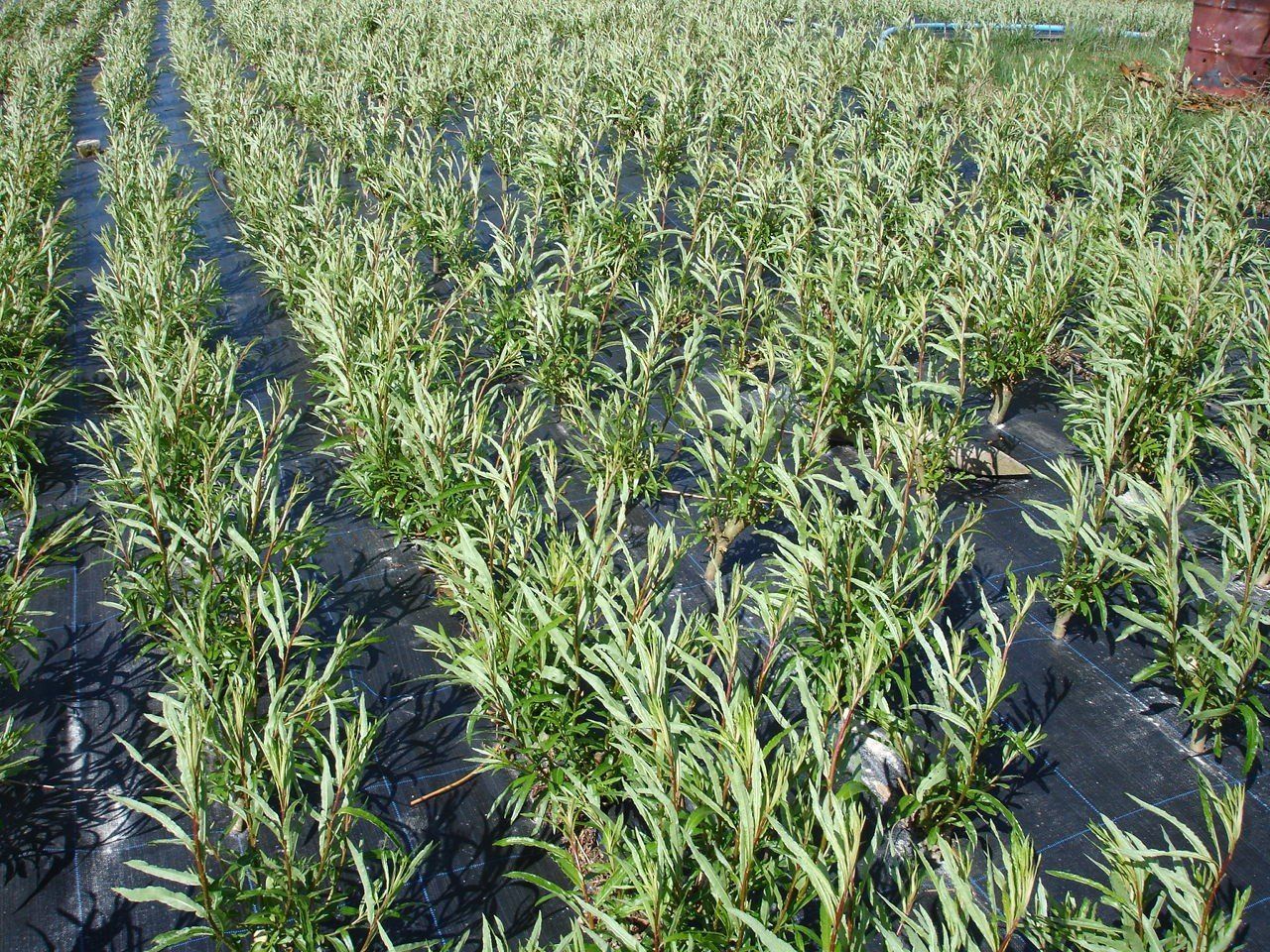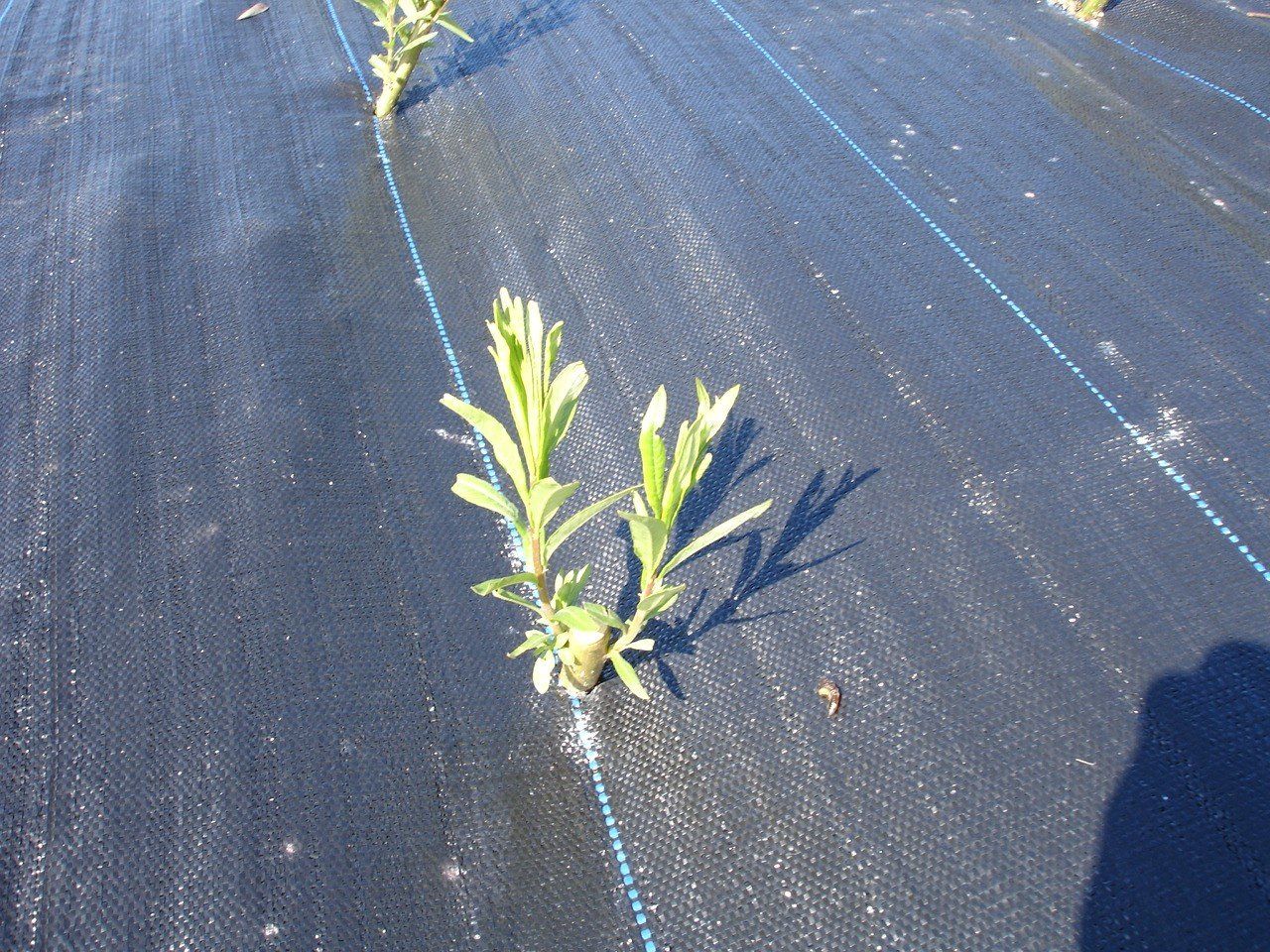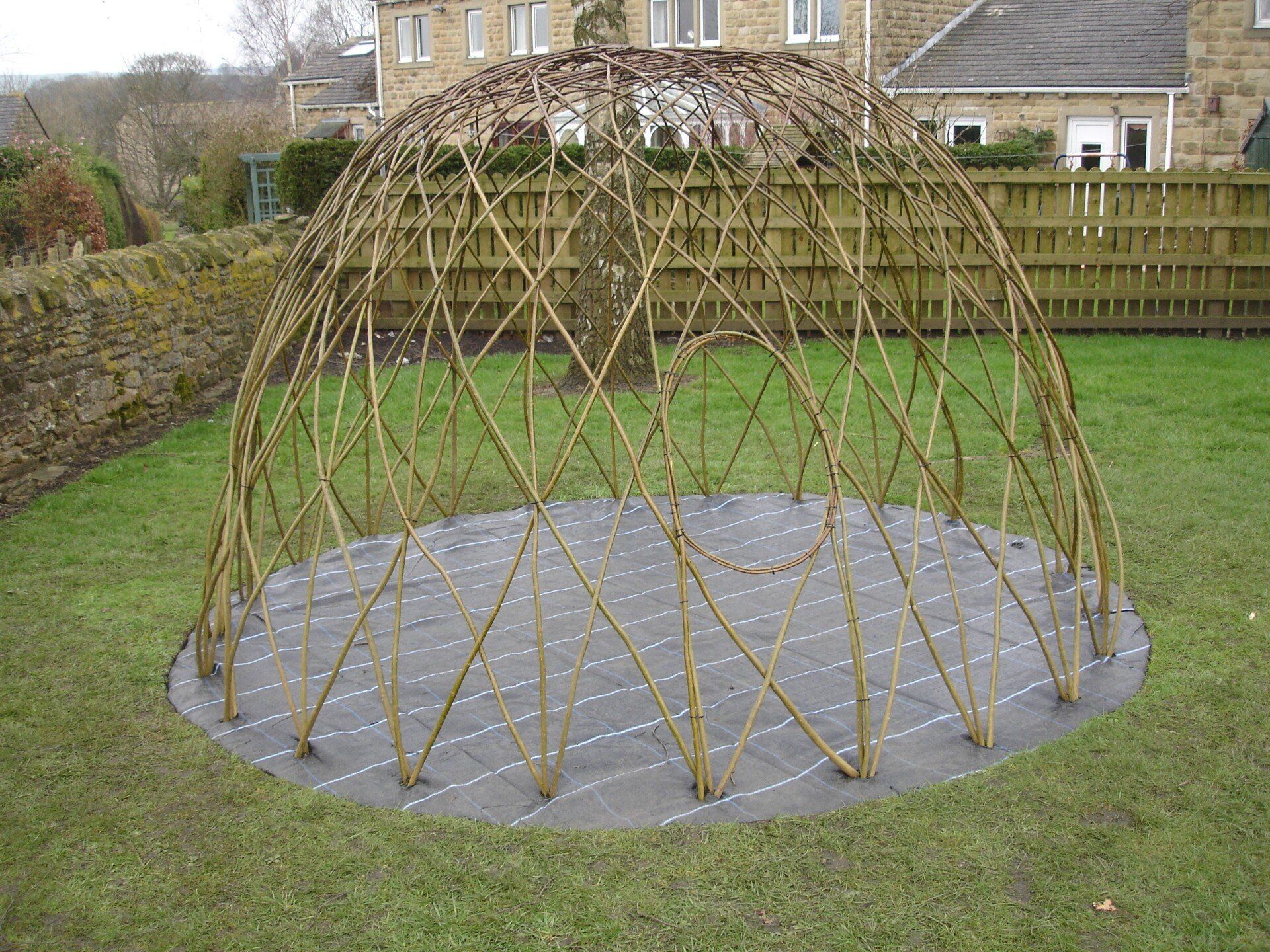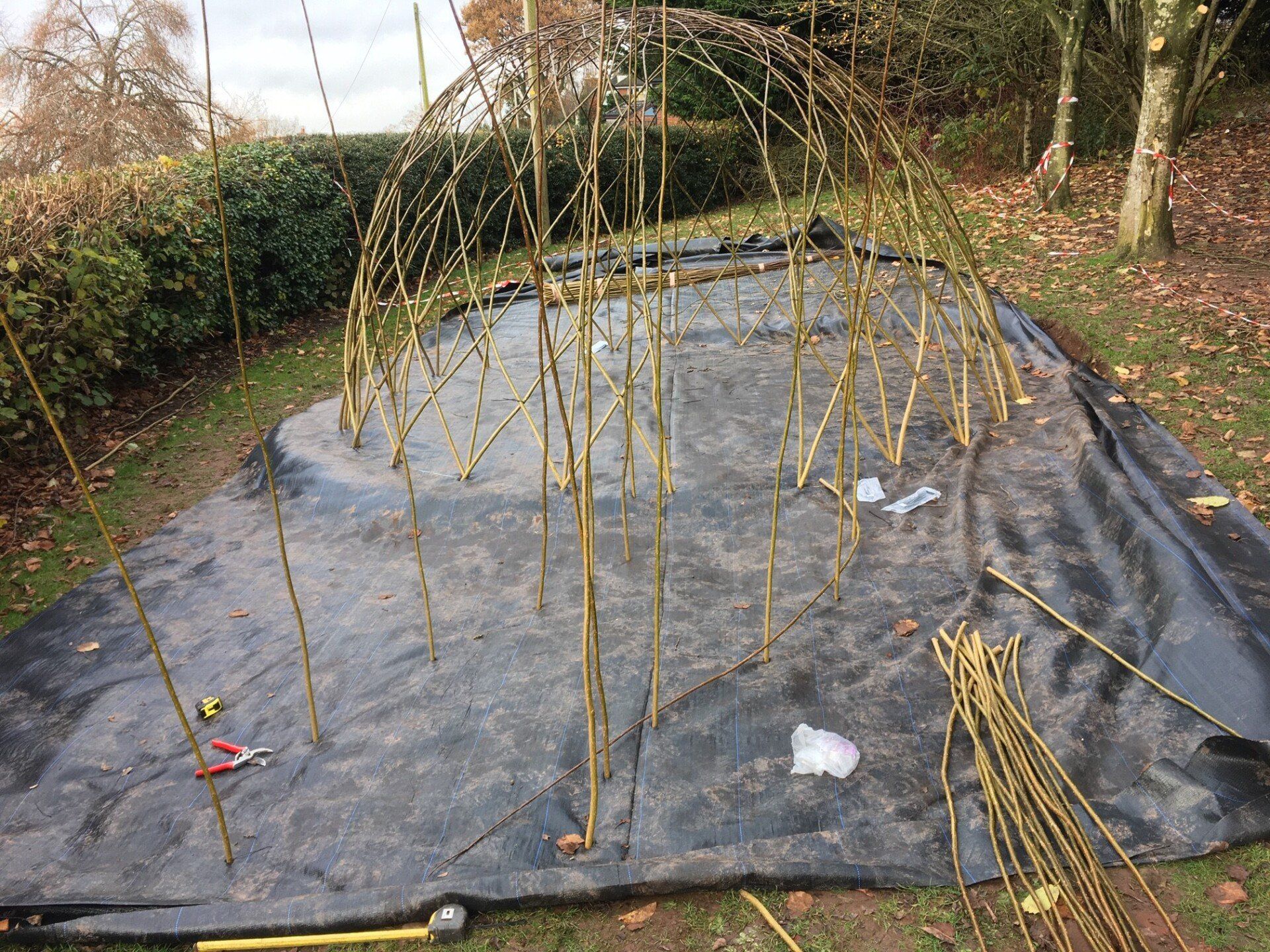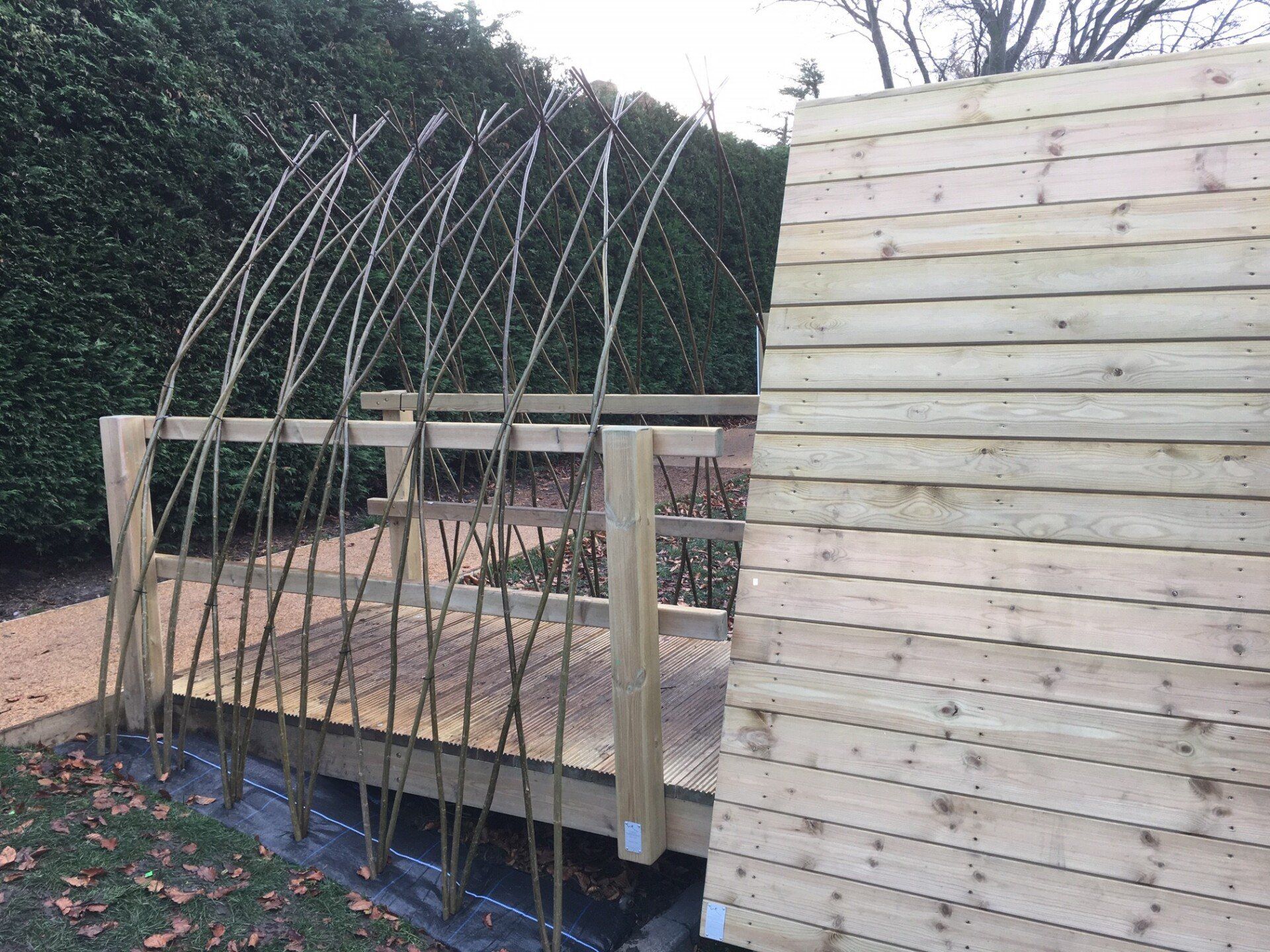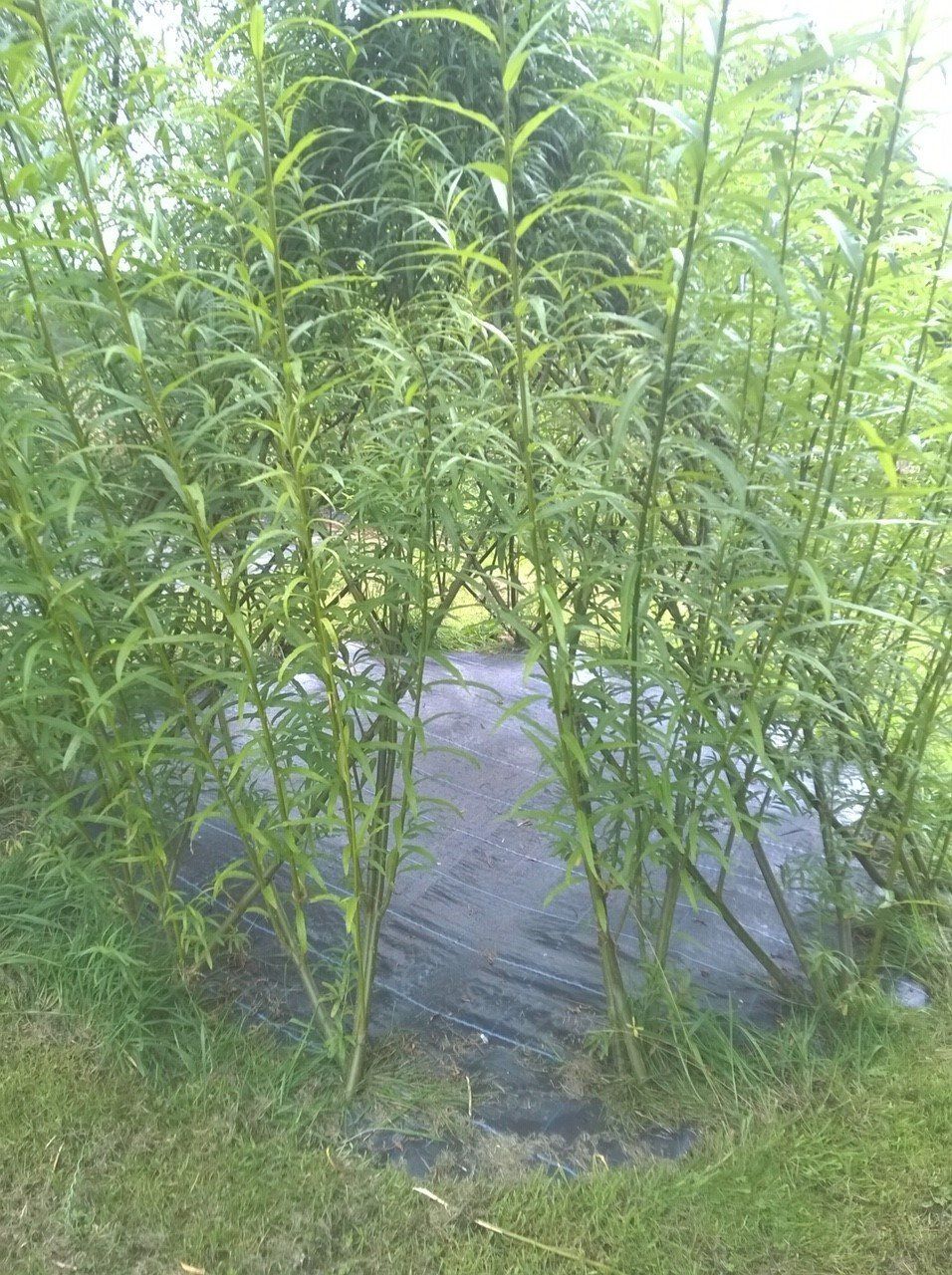Willow Planting & Maintenance
Willow is very adaptable, in the UK climate it will survive almost anywhere.
Willow will tolerate some shade, but grows best in bright sunshine, and will grow on moist, dry or fertile sites as well as in poor soil.
This plant will actually improve poor soil and clean polluted sites. But the more fertile and moist the soil is, the better the plants will grow.
Always plant in the winter. Water occasionally if there is a dry summer in the first year.
Willow Planting Advice
Site Preparation
The amount of soil preparation depends very much on the time available, controlling weeds in the first 2 years is very important to allow cuttings to establish effectively. You can prepare the soil by digging over and clearing all weeds, however using a sheet to cover the ground and kill weeds will work as well, as cuttings can be planted through slits cut in the membrane. We have actually found the the membrane works far better as no maintenance is required to keep weeds away and moisture around the forming roots. For best results the membrane should be a tough woven material which is water permeable. The membrane increases soil temperature and retains water during dry periods. Thin sheets will only last a year but tougher ones can last over 5 years, we only use very tough ones which can last 15+ years. They can also be cut away when the structure is established if you wish.
When and How to Plant willow
The ideal time for planting is early December to the end of March, however depending on the weather and location it is usually fine well into April. Cuttings or rods should ideally be planted immediately they are received but if this is not possible they should be stored in as cool and shady a place as can be found and kept dry if possible.
Cuttings are pushed (through hole made in membrane if used) into the soil leaving about 7-10cm above the surface, rods should have ideally minimum of 10-15cm below the surface. If the ground is hard it may be necessary to use a metal bar to help make a hole for the willow to be pushed into. The cuttings must also be planted the correct way up with the buds pointing upwards.
Spacing
Spacing depends on why you are planting the willow.
If you are planting a hedge or barrier of some sort they can be planted as close as a few mm apart or even butted up against each other, however if you are letting them grow into trees you may want to plant them 3-6m apart to ensure each one get plenty of light. If growing for fuel over a 4-6 year cycle, then 2m is more appropriate.
If you are unsure about this please contact us for advice.
Weed control
As stated earlier the most effective method of weed control is to plant the cuttings or rods through a tough woven water permeable membrane (We can supply). This is very effective and ensures the plants can get established with minimal further work. Helping both weed control and keeping moisture in. The edge of membrane can to tucked into the soil to stop fraying as per photo. Woodchip is another option but we tend to use in addition to membrane.
Weeding by hand is very labour intensive and only practical if there are a relatively small number of plants, it is however of course very effective if done regularly.
Willow Maintenance
Looking After Your Willow
Willow can be trimmed in the summer to thicken growth and sprayed if problems with insects.
Willow can also be cut back in the winter when the leaves have fallen, it is dormant at this time and the cuttings can be planted.
How often and how much you cut it back of course depends on why you are growing the willow in the first place.
Please contact us for advice on this if you wish.
Willow Structures
Willow structures must be cut back every winter to the original structure, this is necessary or the basic structure will be lost.
Ideally during the summer the structure will also be trimmed to encourage lower growth and ensure the new growth does not get too long.
Any breaks in the structure are best repaired and re tied in the winter.
The photos show a wigwam late summer needing a trim. Below it a one year old Fedge Maze which has just been trimmed.
Maintenance Service
We offer a maintenance service for your willow structures, this includes two visits per year, a late summer visit and a winter visit. The summer one will be to trim to ensure thicker growth lower down in structure and re weave and tie any problem areas, also to treat and fix any insect problems (you can get various bugs, mould and even wasps which if left can become a problem over time). The winter one will be to cut right back to ideal (usually original) structure and re tie and fix/weave any problem areas. This includes tidying site after work completed.

